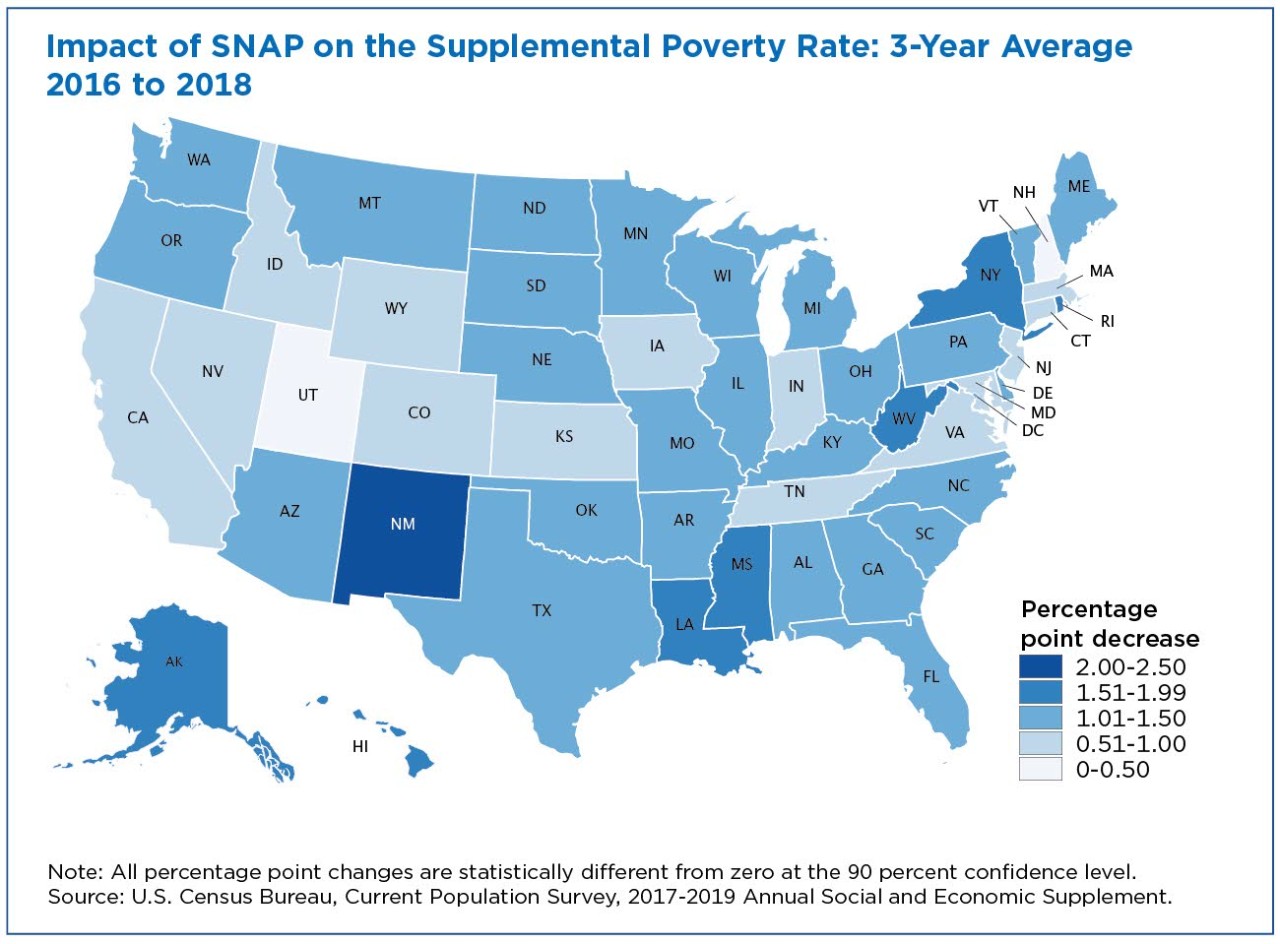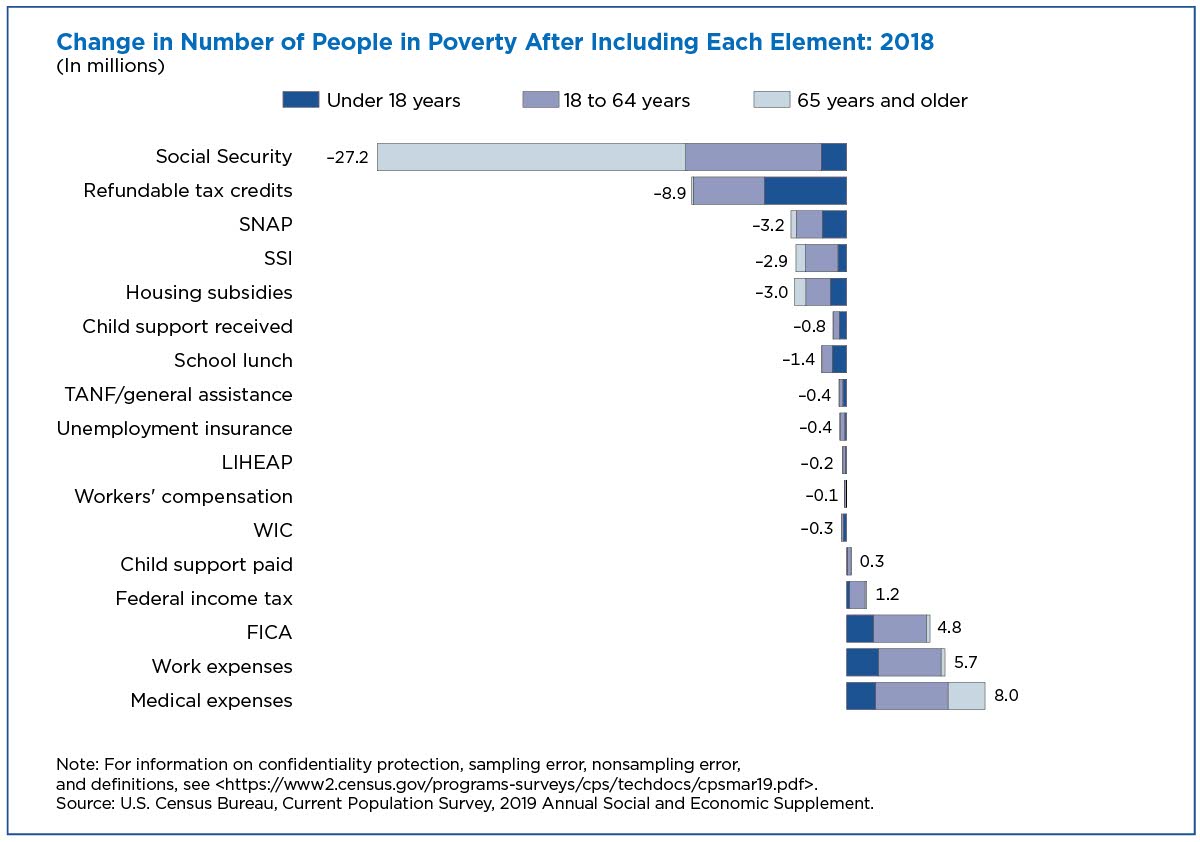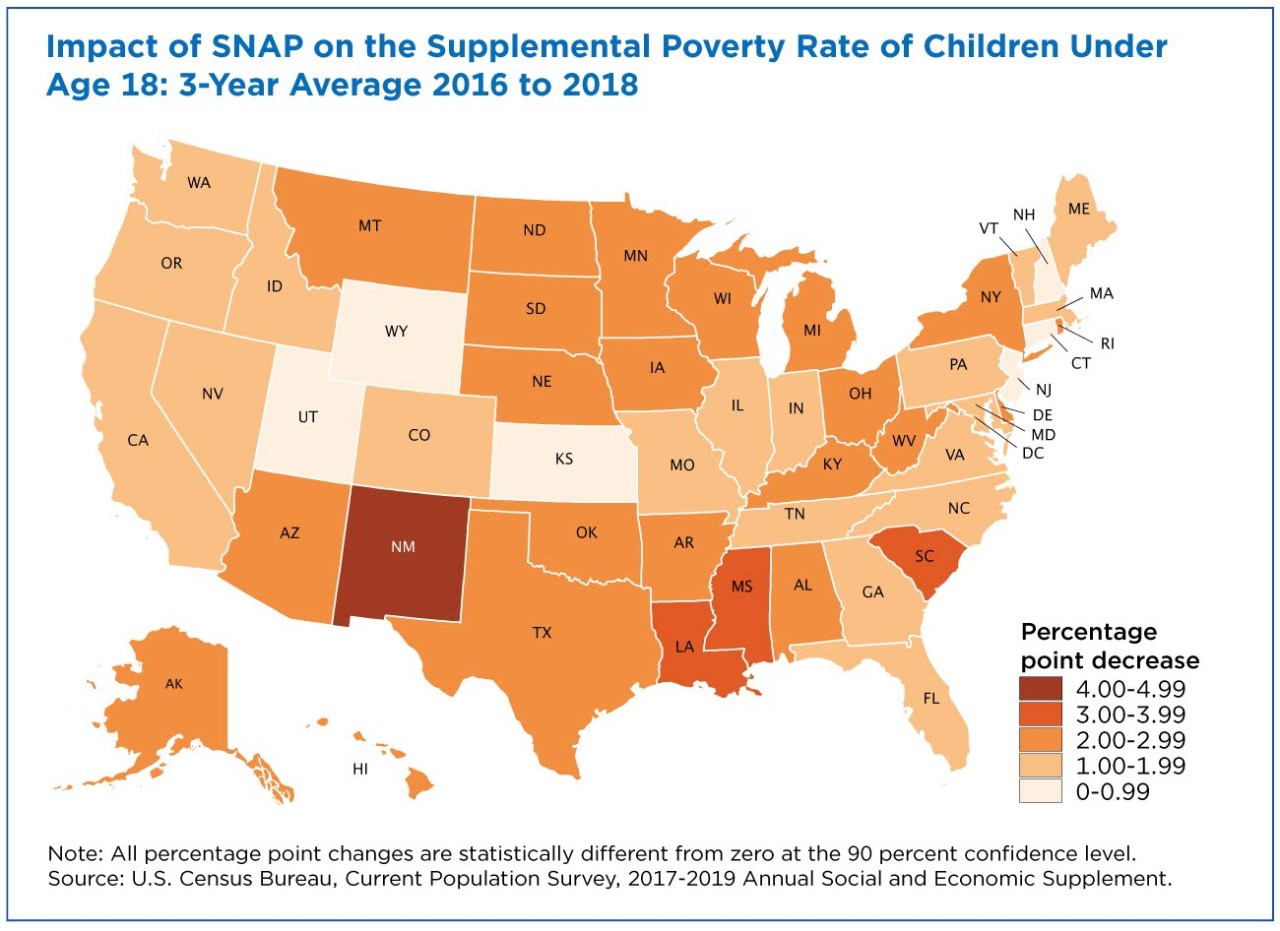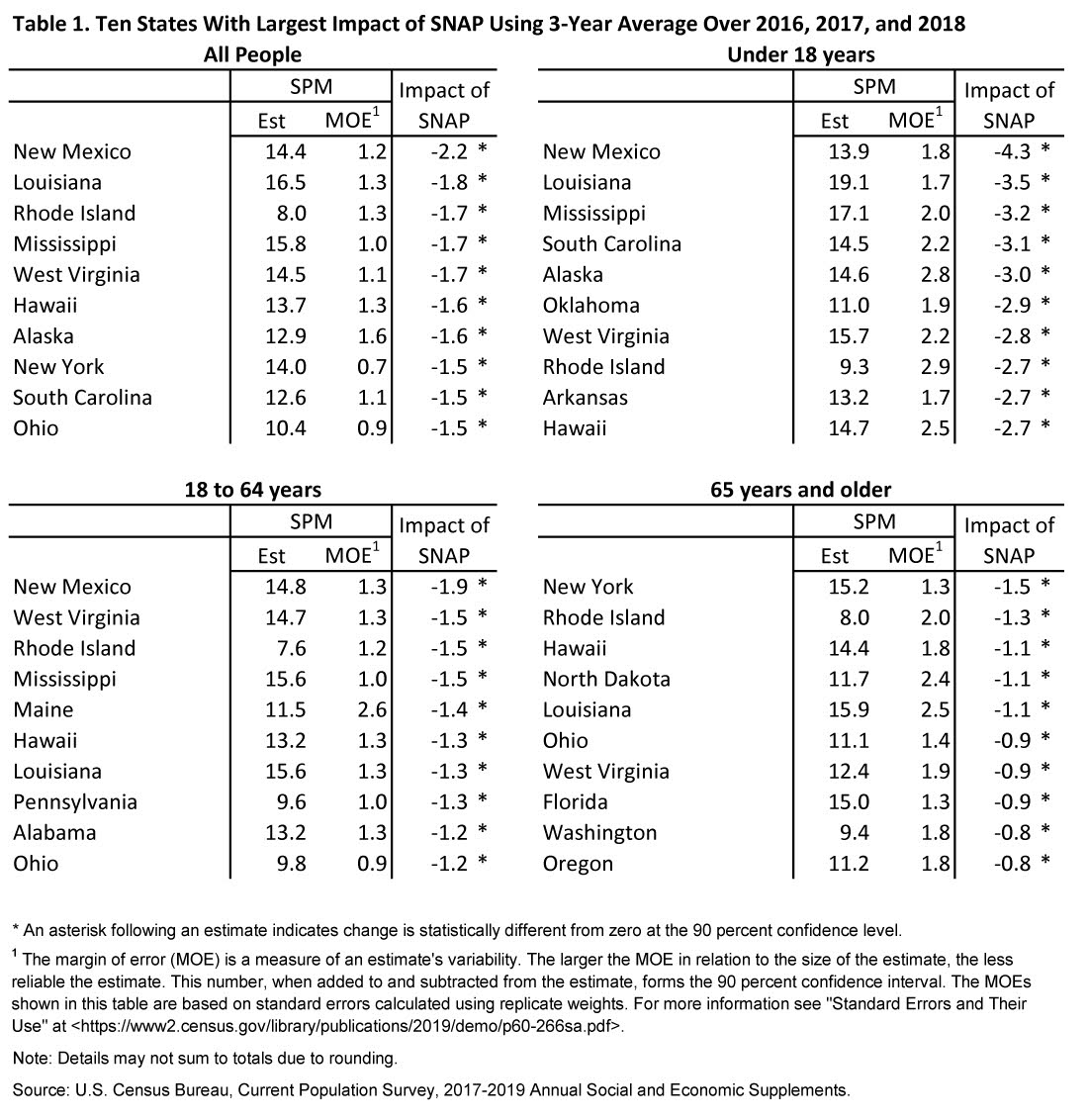SNAP moved 3.2 million people out of poverty in 2018
Due to an error in our tax model, tax units with an Adjusted Gross Income (AGI) below $12,000 were inadvertently not run through the Additional Child Tax Credit (ACTC) portion of the tax model. As a result, 2,435 tax units did not receive this refundable credit, which changed the Supplemental Poverty Measure (SPM) poverty status of about 600 individuals (or 0.3% of the weighted population). This error changed our top-level SPM estimate from 13.1% for 2018 to 12.8%. Using either set of estimates, the change between 2017 and 2018 was not significant overall or for any of the major age categories. All SPM estimates have been revised accordingly. Disregard previous versions of this story.
The Supplemental Nutrition Assistance Program (SNAP) reduced poverty by just over 1 percentage point for the three-year period from 2016 to 2018, according to recently released U.S. Census Bureau data.
Figure 1
The Supplemental Poverty Measure (SPM) shows that SNAP – formerly known as food stamps – cut the poverty rate from 14.2% to 13.1%. This means that with SNAP benefits, an average 3.5 million fewer people were living below the poverty line during that three-year period.
However, there are notable state-level variations; New Mexico, Louisiana and Rhode Island were among the states where SNAP had the greatest anti-poverty impact (see Table 1 and Figure 1).
Why SPM is Important
The SPM allows us to gauge the potential magnitude of the effect of tax credits and transfers in alleviating poverty.
The SPM, an alternative to the official poverty measure, considers the value of noncash government transfers, taxes, and necessary expenses into the resources a family has available to meet their basic needs.
Figure 8 in the 2018 SPM Report released today shows how each element, including SNAP, impacts the estimated number of people below the supplemental poverty threshold.
By subtracting the value of SNAP from resources and recalculating poverty rates (assuming no behavioral changes and all else constant), we can show how many people would have been in poverty in the absence of SNAP.
How does SNAP Reduce Poverty across the Country?
SNAP is a nutritional assistance program that aims to help low-income families afford a nutritionally balanced diet. Among the additions to resources considered by the SPM, SNAP has consistently been among the most impactful noncash transfer.
SNAP is estimated to have prevented approximately 3.2 million people from falling into poverty in 2018 and an average of 3.5 million across 2016-2018.
To create state-level estimates using the Current Population Survey Annual Social and Economic Supplement (CPS ASEC), the Census Bureau recommends using 3-year averages for additional statistical reliability.
The 3-year average poverty rate for the United States in 2016-2018 was 13.1% using the SPM. Subtracting out the value of SNAP allows us to estimate that SNAP benefits decreased the SPM rate by slightly above 1 percentage point, from 14.2% to 13.1%.
This means that with SNAP benefits, 3.5 million fewer people were living below the poverty line.
State-by-State Impact
SNAP is estimated to have decreased the SPM rate in 41 of the 50 states and in the District of Columbia by a value that is greater than or not significantly different than 1 percentage point. Figure 1 above illustrates the impact of SNAP benefits on SPM poverty by state.
New Mexico, Louisiana and Rhode Island were among the states where SNAP had the greatest anti-poverty impact, decreasing each state’s SPM rate by 2.2, 1.8 and 1.7 percentage points, respectively.
Impact on Child Poverty
Children under age 18 are the largest age group receiving SNAP. The program is estimated to have decreased the SPM rate for children by 2.0 percentage points on average, from 16.3% to 14.2%.
New Mexico, Louisiana and Mississippi were among the states most affected by SNAP. The program decreased the child poverty rate of each state by 4.3, 3.5 and 3.2 percentage points, respectively.
Figure 2 illustrates the percentage point decrease in the SPM rate among children within each state.
Figure 2
SNAP had less of an impact on the national SPM rate of adults between the ages of 18 and 64 and those 65 years or older.
For the United States, SNAP reduced SPM poverty for adults 18 to 64 years by 0.8 percentage points (from 13.4% to 12.6%) and by 0.6 percentage points (from 14.1 to 13.5) for adults aged 65 and over.
See Table 1 below for a list of the 10 states whose populations were most affected by SNAP.
Table 1
The Census Bureau reviewed this data product for unauthorized disclosure of confidential information and approved the disclosure avoidance practices applied to this release. CBDRB-FY19-POP001-0049.
Danielle Wilson is an intern and Liana Fox is a survey statistician in the Social, Economic and Housing Statistics Division at the Census Bureau.










